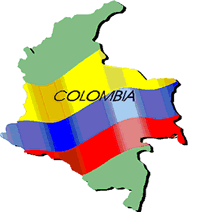The Challenges of Reintegration
In June 2011 the Victims Law was launched by Juan Manuel Santos Administration, as part of the transitional process that Colombia is currently facing. The document took into account the role of children in the armed conflict and evaluated their position as victims and perpetrators. Article 3 of the document says: “Members of the illegal armed groups will not be considered as victims, except in cases of children or adolescents that have been unassociated from the organized armed forces, while they were still underage”.
In this way, insurgent children and adolescents were considered as victims of the civil war, and not only as perpetrators. The absolutions of crimes and the reintegration of these child soldiers represent an important step in order to protect them from a conflict that started before they were born. Nevertheless, the Law has also demonstrated to be insufficient and too wide. Besides, the uncertainties about the future and the profitability of the drug business have hindered children out of war.
On the other hand, the paramilitary forces started a process of demobilization in 2005, with a particular legal context that took into account both adults and children. In fact, the Colombian government, through the High Council for Reintegration, counted circa 4.400 children separated from the illegal armed groups. The main challenge with them was the fact that, some of these children could not be treated as victims, since they started as child soldiers, but were already adults when demobilization took place. In this way, the gaps in national and international law have become an important issue that affects them directly.
A boy that was abducted while he was underage; was trained and forced to fight against the enemy, and then became an adult, is not considered by the Colombian laws, or the International treaties, as a victim. But, was it really his choice to become a perpetrator? If children grow in an environment of war, they are educated in a game of blacks and whites, and they only get to know this reality, culpability and collective guilt should be considered from a wider perspective.
Yet, the problem is even more complex. Some paramilitary forces frustrated by the lack of results of the demobilization process and seduced by the drug business, evolved and became the emergent criminal bands, known today as bacrim. These new and growing forces keep enrolling minors among their lines –some of them ex-members of paramilitary groups- and forced them to fight against the state agents. An even bigger legal limbo is developed in this scenario, where child soldiers of bacrim are considered criminals and cannot be treated as victims, denying them the government’s protection and the possibility to participate in any reintegration program. If a country is unable to offer a guarantee to its population and fails to promote a healthy environment for the development of childhood, the way individuals are separated into victims and perpetrators should be reconsidered. As many actors and causes the Colombian armed conflict involves, many perspectives should be taken into account in order to face the future. A transitional process cannot be started without understanding completely the reality of the country.
Transitional Process in Colombia
 The appearance of insurgency, organized crimes and new military practices have become of great importance for the political and social debates regarding the new elements that should be taken into account during the transitional justice processes worldwide.
The appearance of insurgency, organized crimes and new military practices have become of great importance for the political and social debates regarding the new elements that should be taken into account during the transitional justice processes worldwide.
Until now, integral reparation has involved five main issues: the restitution of land and goods, the rehabilitation of victims, satisfaction in terms of symbolic and moral reparation, search of non-repetition guarantees, and the compensation of victims. The Colombian transitional process has tried to address all of these elements through different initiatives as the Victims and Land Restitution Law, providing reparations for some survivors of human right abuses, including those perpetrated by state agents.
In the case of child soldiers, the initiative “Mambrú no fue a la Guerra” offers recreational and cultural space for boys and girls in the most dangerous zones of Colombia, in an attempt to avoid their involvement in the armed conflict. This program, launched in July 2011, supports different projects all around the rural and urban areas of the country, in order to create incentives for kids not to join the forces. Regardless, the initiative has demonstrated to be useful, even though it does not address abductions or the involuntary enrollment of children. As was said before, the Colombian armed conflict is far more complicated than a game of cops and robbers. The elements that should be taken into account while analyzing the problem are wider and involve more perspectives than those that are being used nowadays. In this way, the transitional process has many more challenges to address than those that are currently being studied, particularly in the case of child soldiers. Still, the questions remain the same, who is to blame? Who should be judged? And which challenges will Colombia have to face?











Sad that there is war going on!